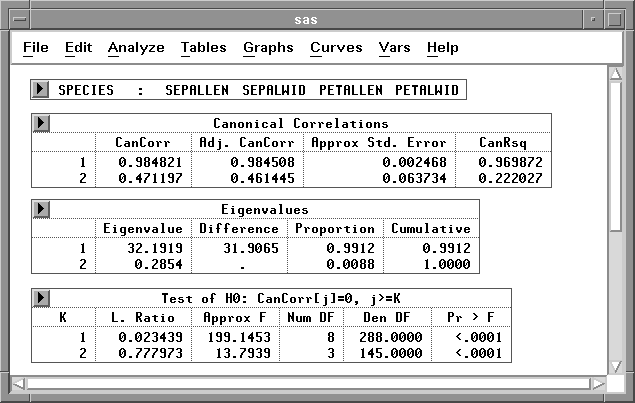This tutorial will show you how to set up and interpret a Canonical Correlation Analysis in Excel using the XLSTAT statistical software. Not sure if t. Canonical correlation analysis is the study of the linear relationship between two sets of variables. It is the multivariate extension of correlation analysis. By way of illustration, suppose a group of students is each given two tests of ten questions each and you wish to determine the overall correlation between these two tests.
Origins and aim of Canonical Correlation Analysis Canonical Correlation Analysis (CCorA, sometimes CCA, but we prefer to use CCA for ) is one of the many statistical methods that allow studying the relationship between two sets of variables. Tempat Download Launch X431 Pro 3 Untuk Hp on this page. It studies the correlation between two sets of variables and extract from these tables a set of canonical variables that are as much as possible correlated with both tables and orthogonal to each other. Discovered by Hotelling (1936) this method is used a lot in ecology but is has been supplanted by RDA () and by CCA (Canonical Correspondence Analysis).
Principles of Canonical Correlation Analysis This method is symmetrical, contrary to RDA, and is not oriented towards prediction. Let Y 1 and Y 2 be two tables, with respectively p and q variables. Canonical Correlation Analysis aims at obtaining two vectors a (i) and b (i) such that ρ (i) = cor[Y 1a (i),Y 2b (i)] = cov(Y 1a (i) Y 2b (i)) / [var(Y 1a (i)).var(Y 2b (i))] is maximized. Constraints must be introduced so that the solution for a (i) and b (i) is unique. As we are in the end trying to maximize the covariance between Y 1a (i) and Y 2b (i) and to minimize their respective variance, we might obtain components that are well correlated among each other, but that are not explaining well Y 1 and Y 2. Once the solution has been obtained for i=1, we look for the solution for i=2 where a (2) and b (2) must respectively be orthogonal to a (1) and b (2), and so on.

The number of vectors that can be extracted is to the maximum equal to min(p, q). Note: The inter-batteries analysis of Tucker (1958) is an alternative where one wants to maximize the covariance between the Y 1a (i) and Y 2b (i) components. Hp C5683a Usb Device Driver.
Results for Canonical Correlation Analysis in XLSTAT • Similarity matrix:. Descargar Emulador De Calculadora Hp 50g Para Android there. The matrix that corresponds to the 'type of analysis' chosen in the dialog box is displayed. • Eigenvalues and percentages of inertia: In this table are displayed the eigenvalues, the corresponding inertia, and the corresponding percentages.
Note: in some software, the eigenvalues that are displayed are equal to L / (1-L), where L is the eigenvalues given by XLSTAT. • Wilks Lambda test: This test allows to determine if the two tables Y1 and Y2 are significantly related to each canonical variable. Program Stock Barang Php To Usd. • Canonical correlations: The canonical correlations, bounded by 0 and 1, are higher when the correlation between Y1 and Y2 is high. However, they do not tell to what extent the canonical variables are related to Y1 and Y2. The squared canonical correlations are equal to the eigenvalues and, as a matter of fact, correspond to the percentage of variability carried by the canonical variable. The results listed below are computed separately for each of the two groups of input variables. • Redundancy coefficients: These coefficients allow to measure for each set of input variables what proportion of the variability of the input variables is predicted by the canonical variables.